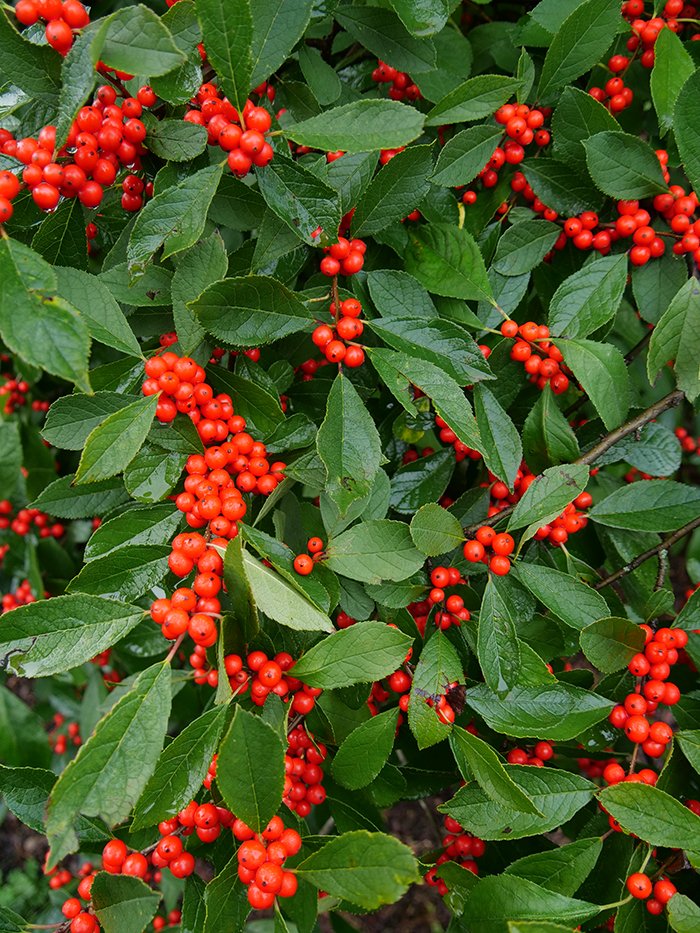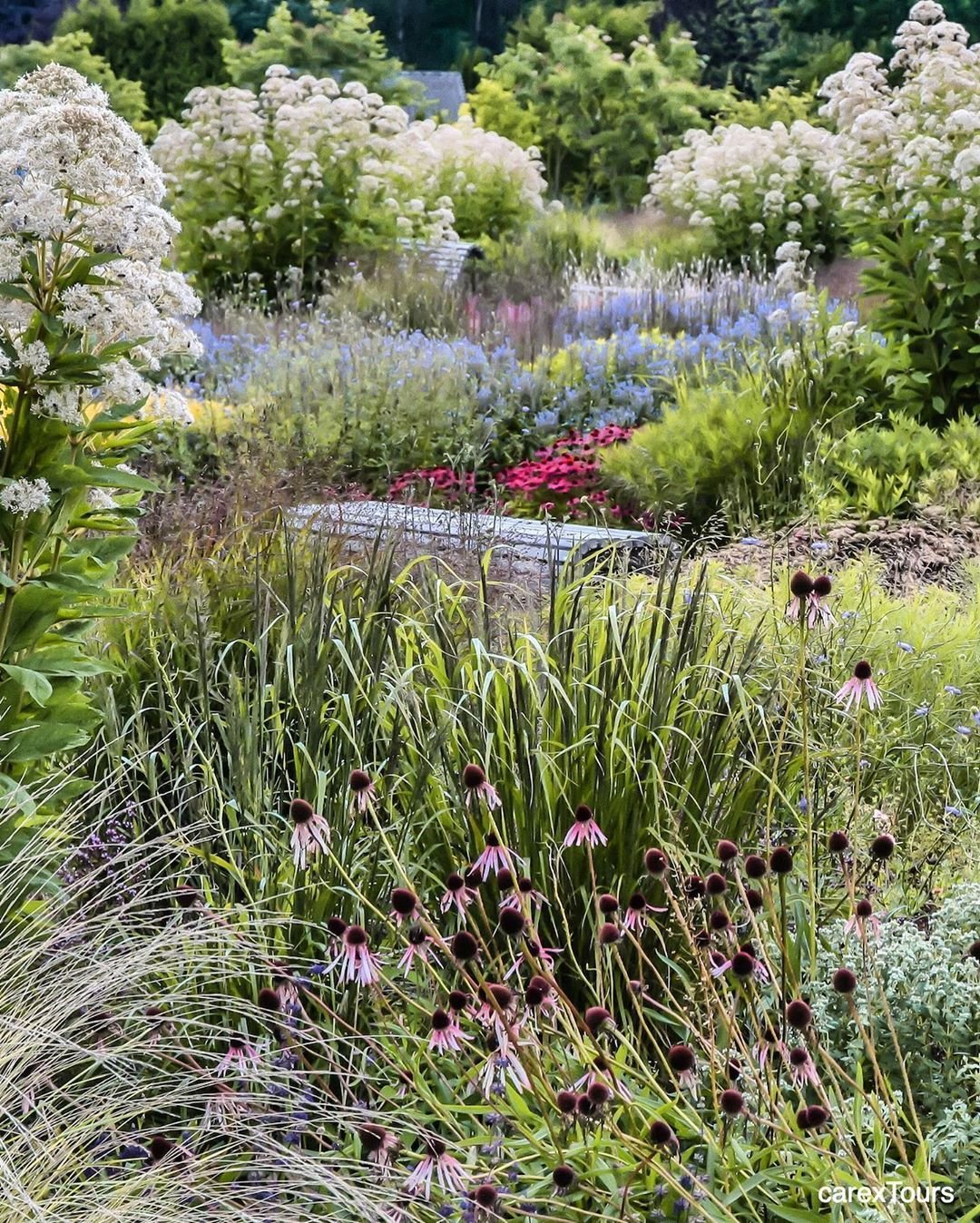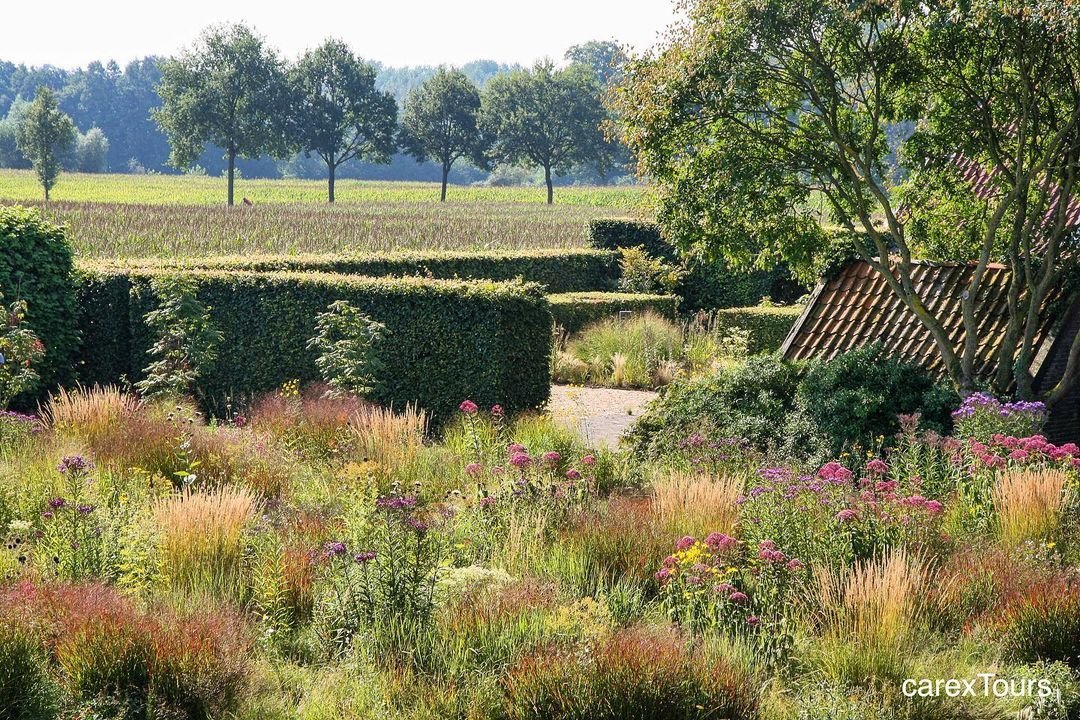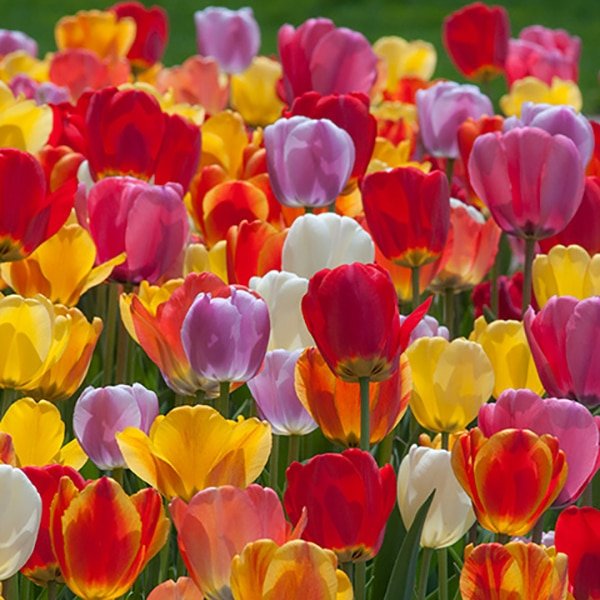This week lucky listeners got a baritone version of my voice because of a head cold, and while I am griping, I may as well mention, again, that we need rain! Generally the ‘put away your hoses’ thing does not coincide with the ‘water your plants’ thing, but don’t forget that plants that are new and precious, particularly evergreens that are new and precious, will need to start the winter with some reserve moisture in the soil.
Plant of the Week
Way back in Episode #2 I mentioned this one: the Ilex verticillata, or Winterberry. You may say, c’mon, have you already run out of Plants of the Week? No, but I honestly don’t remember what inspired me to feature it back at the end of February. Maybe I saw some with the berries hanging on, but chances are pretty good that it had fed the birds by that time of year. Right now, however, you will see the green foliage right next to those red berries, making the scene very ho-ho-ho-ish.
Image from Proven Winners. Because this plant is a winner.
This plant is native to the Eastern US and Canada, feeds all kinds of coveted songbirds, will tolerate wet soil, AND can help you out with Christmas decorations.
One thing you need to know—it’s one of those dioecious plants, which means that the male bits are in one entity, while the female bits are found in another. That is how most humans can also be described, but it’s fairly unusual in plants (most plants are hermaphroditic with all the junk needed found in a singular plant).
So if you want the berries, you have to get yourself a non-berrying male Winterberry too. You can plant his homely self off behind a bush somewhere so you don’t have to look at him.
Guest
Carolyn Mullet started CarexTours for a very good reason: she was a professional garden designer who never had time to go look at beautiful gardens. Having fine-tuned the logistics of getting Americans into the loveliest public and private gardens in Europe (7-9 day trips, 10-15 gardens, great meals and accommodation), Carolyn had to take a pause during the pandemic, but is now planning for some enticing excursions in 2022.
More information will be available on her website in the coming weeks, but it’s not too soon to start dreaming and hinting about a very special Christmas present, is it?
Carolyn has tons of followers on Facebook and Instagram, where she posts amazing photos of her trips. She and I discussed the natural perennial movement, citing Piet Oudolf as the father of the trend—a trend that has lasted decades and shows no signs of wavering.
The Play List
Henry from Alexandria wanted to know about putting roses to bed, and the tea on that (get it? tea? tea rose? ummm, there’s something called a Hybrid Tea Rose but that pun makes me think I am getting punchy and should probably wrap this up…) is that there is no call to action at this time. Roses LOVE a good scalping in winter and early spring because they produce more flowers on new canes, and you will inspire new canes with the scalping!
Another proponent of this movement is American garden designer Kelly Norris, whose book New Naturalism is highlighted in Episode 6 of Into the Garden with Leslie.
As you can see from these photos borrowed from Carolyn’s Instagram—all Oudolf designs—the basics include texture, movement, ornamental grasses, and even seed heads.
I would always ‘hill up’ my roses with leaves and/or mulch in winter when I lived in Connecticut, but not here in Virginia. Mine haven’t gone dormant yet!
Other calls to action in the garden this week? If you don’t have a nasty head cold, you can go outside and plant your bulbs.
Listen
And if you do have a nasty head cold, just sit tight and wait for Episode 43, which will be all about bulbs, again, as I quiz the owner of my fave bulb source, ColorBlends. Tim Schipper and I talk all about bulbs, including, thank goodness, that it’s not too late to plant them!
Big Ups, one of the Blends that Tim and I will chat about.






